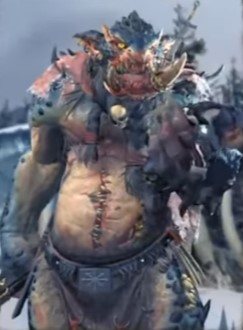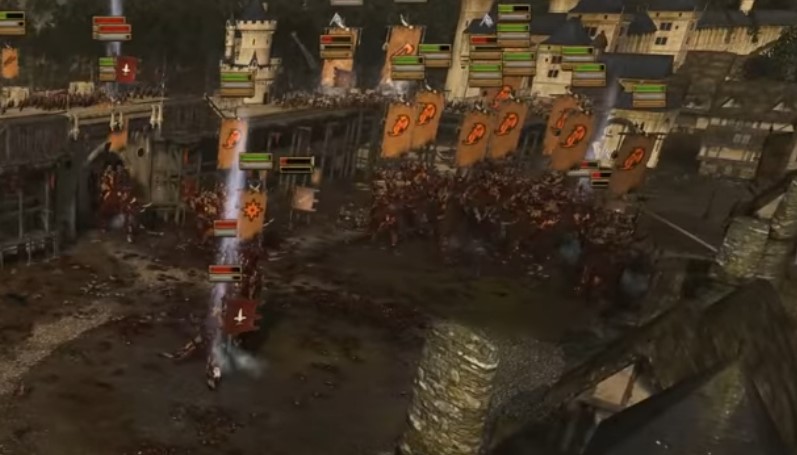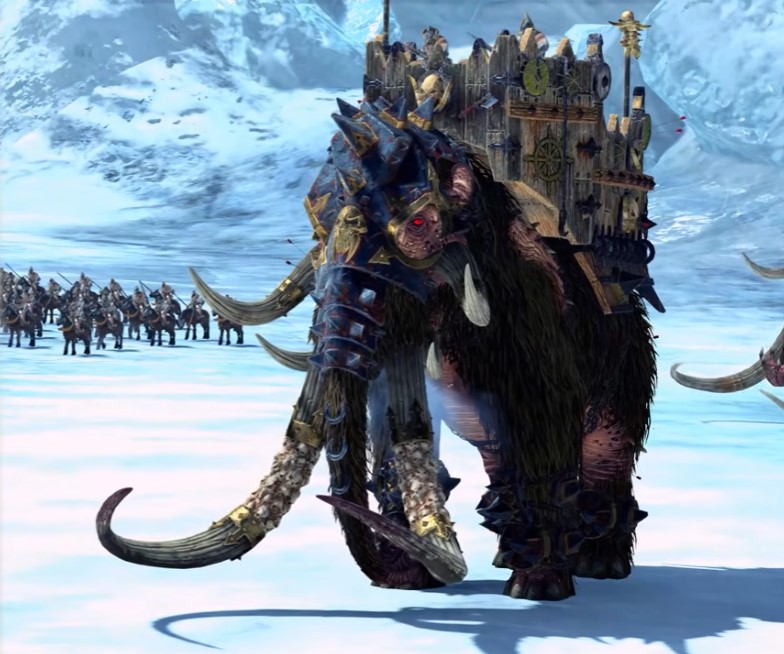By Joshua Waddles
30 Jan 2022
The forces of Chaos didn’t get a lot of love through most of Total War: Warhammer II’s lifespan. Two of the factions were horde factions and one faction had to play as a hoard faction without a hoard’s mobile recruitment capabilities. Creative Assembly finally showed Chaos some love with the Beastmen update, introducing The Slaughterhorn Tribe and new mechanics which turned a nearly unplayable faction into arguably the best.
But as for Warriors of Chaos and Norsca, well…
How to Play as Norsca in Warhammer II


Norsca has the opposite problem with Warriors of Chaos. As long as Norsca players are careful about which factions they allow themselves to encounter and don’t attempt to confederate too quickly, they can have a very cushy early game, but it’s the late game where the Norscans start getting kicked around. Norscan factions are able to capture coastal cities and certain other non-Norscan settlements, but most inland settlements have to be razed, with nothing discouraging other AI factions from quickly resettling the ruins. So as soon as players finish mopping up Reikland, they turn around and find out they just gave Karaz-a-Karak 20 free cities and Thorgrim Grudgebearer is sending six stacks toward Norsca to say thank you. And Norsca can’t even build walls!
Conversely, players could wreck The Vampires and Dawi, but then they have the same issue with Reikland. During The Order Tide, the AI habitually sends three or four armies after you at once and there are only two ways to deal with that: making use of lightning strike with excellent scouting and even better micromanagement (any army on its own has to be the attacker every time, never the defender), or keeping the armies close together and unchecking “control large armies” when defending, using War Mammoth spam to grind the enemy down.

Speaking of War Mammoths, it should be noted that most of Norsca’s roster does not perform very well on Very Hard battle difficulty. Spamming Marauder Horsemen and Marauder Horsemen with Throwing Axes is affective against dwarfs in the early campaign, but will get shredded against guns, so while the player may have time to use them against Kraka Drak if they rush and they’re playing as Wintertooth (or WoC, which also has these units), they’re almost forced to resort to a doomstack if they want to win a campaign on very hard or legendary difficulty. That would be War Mammoths for Norsca or Ice Trolls for Wintertooth, adding a couple of fire mages with the Infernal Dominance trait into each army. The massive supply line penalties make it very difficult to field more than four armies on the higher difficulties, taking away the option of just overwhelming the enemy with numbers, although keeping all of the armies in raiding stance for as much time as possible can mitigate attrition enough to make this a viable strategy.
So what’s changing in Warhammer III?
Supply Lines!
As explained by Legend of Total War, CA has greatly reduced the cost of supply lines in Total War: Warhammer III. Those who play on the lower difficulties may not notice this change. The supply line upkeep increases were one percent on easy and two percent on normal, but on very hard and legendary, each new army recruited after the first army increased upkeep by 15 percent for every unit. On legendary difficulty, this was felt even more because of the various additional upkeep and economic penalties.
But for Warhammer III, supply lines only increase upkeep by four percent per army, allowing players to field hordes of relatively cheap armies. Players can certainly still doomstack (and we will, there are just few things more satisfying than trampling over two elite armies with a doomstack of War Mammoths), players get a lot more bang for their buck by fielding several armies of mediocre units with just two or three elite units.
This is also likely to increase the fun of playing Norsca quite a bit. Skinwolves and fimir are interesting critters that any true scion of Chaos would want to see in battle. Now players on the harder difficulties can do that, instead of having to save their unit slot and money for either a war mammoth or an ice troll.

Walls Suck Now!
Warhammer III comes with a complete rework of siege battles, including a total redesign of all city and minor settlement maps. Cities now sit in the very center of the map, allowing the player to attack from any or all sides, and minor settlement battles take place on maps resembling minor settlements instead of field battles.
On very hard battle difficulty, the main advantages of walls were the additional garrison units obtained by building them and the ability to force the enemy into chokepoints. Minor settlement battles now have chokepoints by default, walls or no walls.
In addition players can now build additional goodies in both their major cities and minor settlements in the forms of barricades and towers. Players (and AI) construct them during the battle with resources, forcing the enemy to hurry to try to prevent their construction. The new towers, like the old towers, do a lot of damage.
But the new towers are inside the settlement. They can shoot over some obstacles, but they’re not tall enough to shoot over the walls. Walls come with their own towers, but they have to be manned by a unit, which is still not optimal in Warhammer III. There are no buffs for defending the walls and against factions with lots of flying units, trying to defend the walls can be very disadvantageous. Units such as Pegasus Knights have a bit of trouble taking off again after they land to attack a unit, giving players a chance to bog them down and wipe them out in melee. But on the walls they have absolutely no problem taking off again immediately after landing. In addition, that initial charge knocks some of your entities off the walls, allowing the flying unit to kill more entities than it would have if it had performed the same attack against a unit on the ground. And for bonus points, in a recent change, the player landing one of their own flying units against a unit on the walls can also accidentally knock entities off the ramparts, killing them.
Players are better off arranging their armies in chokepoints to meet the enemy after they breach the gates. Hopefully down a long corridor, leaving them wide open for a Burning Head spell (which now bounces off the walls and continues, which is great for the spellcaster, but anyone fighting against Tzeentch or another magic-heavy faction had best spread their armies out a bit).
But the biggest reason walls suck is because in Warhammer III, walled settlements must defend two checkpoints in order to win whereas the garrisons in unwalled settlements only have to defend one. When defending two checkpoints, players are forced to split their armies, which is usually just a settlement garrison defending against a full stack. For such a defense, the best tactic is to keep the army relatively close together and try to get the invaders into a single checkpoint, hopefully forcing the enemy army to glob up for area of effect damage. Forcing the garrison to split up and defend two locations heavily favors the attackers.
So Norsca’s mechanics actually make siege defense easier than it does with most other faction. Norsca’s best units are monsters or missile cavalry, which can’t climb walls anyway, and the Norscans still have buildings which create additional garrison units without creating walls.
Norsca Can Settle Anywhere Now!
Norsca isn’t playable in Warhammer III yet, but live streamers with early access to Warhammer III have observed that the AI Norscan factions don’t seem to be constrained in their settlements the way they were in Warhammer II. Players in Mortal Empires (when it gets released) will still likely have to move fast to stop the Order Tide, and the AI seems much more aggressive in Warhammer III, but at least those damn Dawi will have to fight you for all of those settlements instead of just settling ruins.
For more nerd news, follow The Southern Nerd on Facebook, Pinterest and Patreon.

